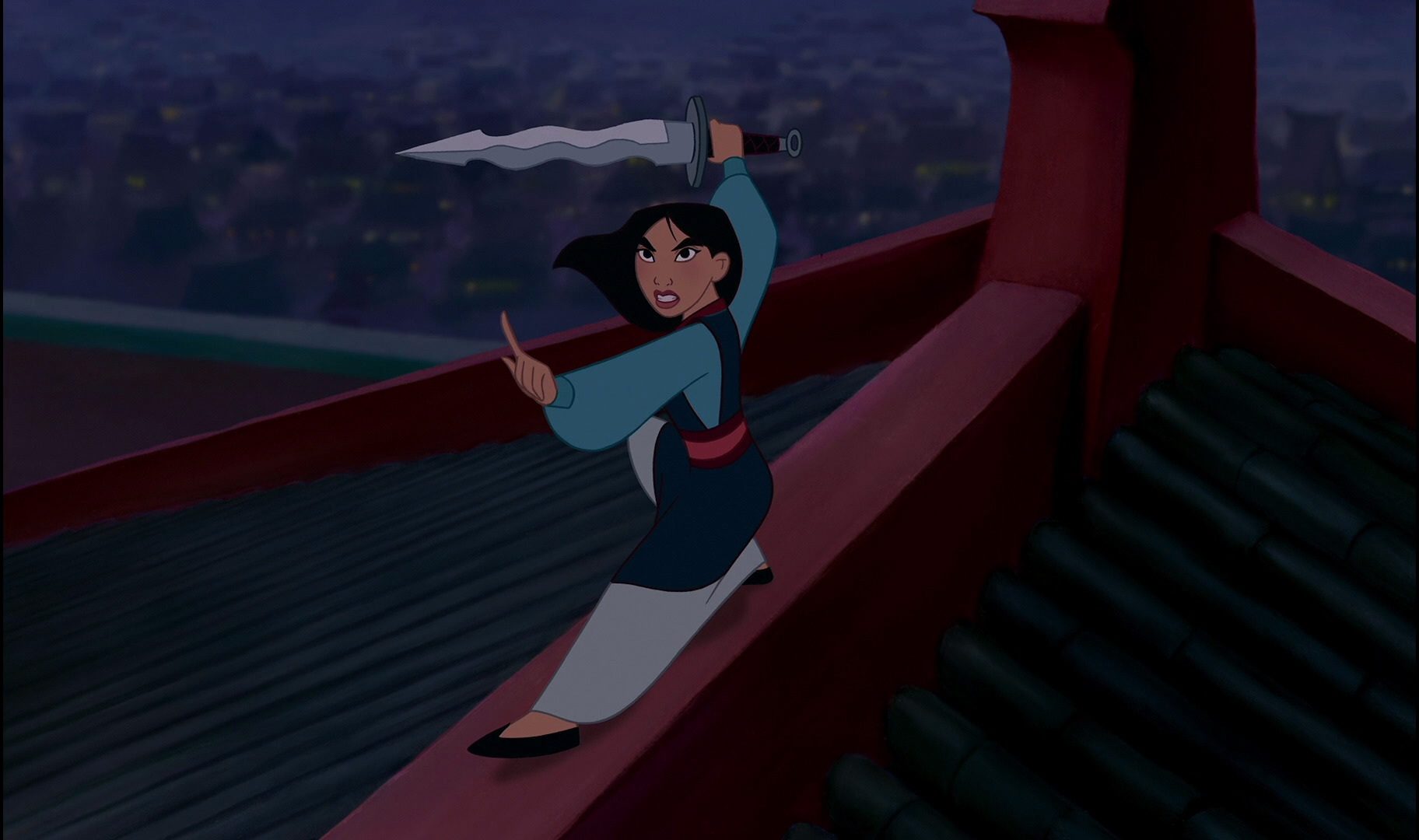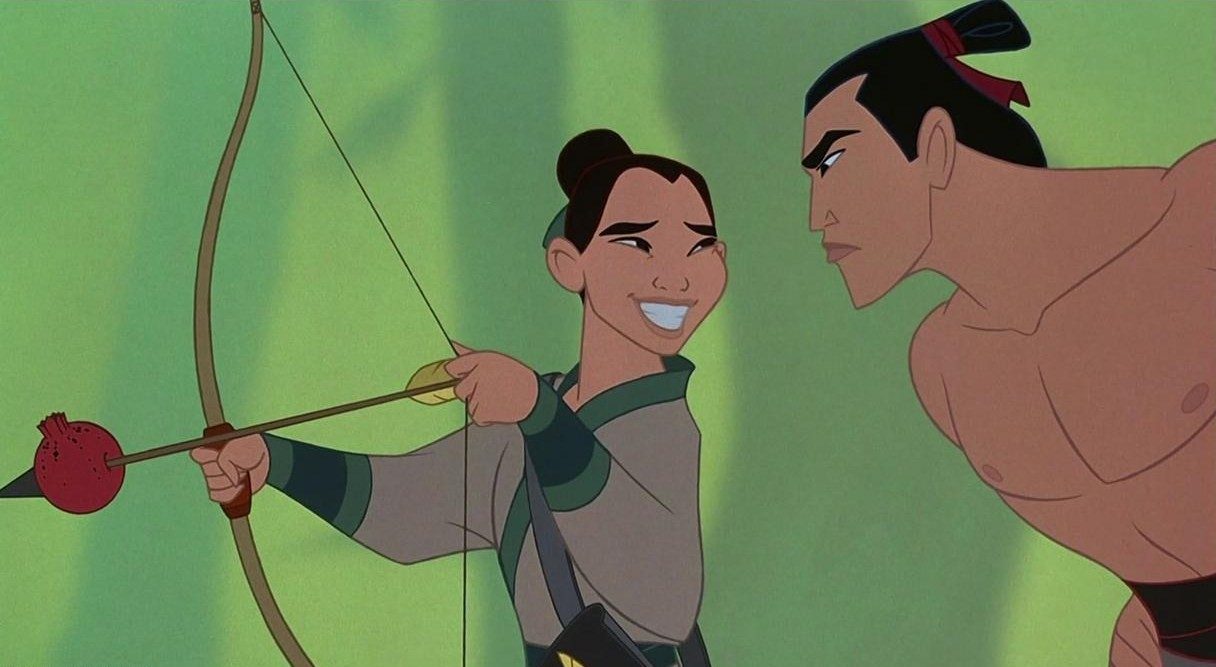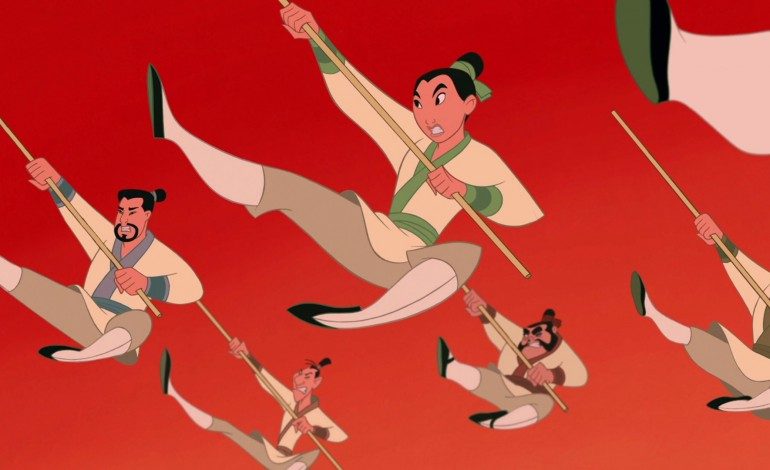

Here we go again. On March 30th, Disney announced it was going into pre-production of a new version of its 1998 film, Mulan. This film is set to be the latest in the studio’s conga line of live action adaptations of older classics, a trend that started with Alice in Wonderland, Maleficent, and Cinderella and is set to continue with upcoming reinterpretations of The Jungle Book, Beauty and the Beast, and Dumbo. And I don’t get this choice. I will be the first to admit that this fad of translating classics out of animation has left me very cold overall, with, “It was pretty inoffensive,” being the best I can say about any of the films that have been released so far. But even with that not inconsiderable grain of salt… Mulan? Really? Who at Disney decided that this would be a good idea?
Okay, hold on – yes, I do know the reason why this is happening. Now that their first three ventures into giving classics live action make-overs has made them enough money to refill Scrooge McDuck’s money vault many times over, Disney seems committed to continuing the revamping their catalogue for the modern youngster. And now that their beloved 90’s Renaissance is getting to be twenty years old (yikes!) it seems that enough time has gone by for Disney to be willing to mine those gems. With a gross that rose above the $300 million mark and an avid following, Mulan remains one of Disney’s most profitable and popular properties. And with the… viral love that the Internet has showered upon certain parts of the film in the digital age, the public’s affinity for the film only seems to have grown since its release. So I understand why this remake is happening – from the standpoint of the ruthless calculus of finance it makes sense.
There’s even a surface layer on which it seems like Mulan would be a good fit for a live action adaptation, especially compared to the challenges you’d have to face if you wanted to tackle other properties of the Disney Renaissance. Imagine trying to make a live action of Aladdin around the hole left by Robin Williams, or the crazy extremes you’d have to go to in order to approach a similar adaptation of The Lion King. Mulan is much more feasible: the magical and supernatural elements are much more peripheral to the plot than they are in other properties, the story is based in real-life conflict, and even its most famous and recognizable performers don’t end up owning the film the way certain others do. In terms of finding Disney’s most grounded and “realistic” story, Mulan is probably tied with Pocahontas for the top spot. This story of the film could certainly be told via live action.
But remember, filmmakers are not just setting out to do a new retelling of the traditional Chinese legend of Hua Mulan. That enterprise might prove to be interesting, if not outright illuminating. (The broad strokes of the story are largely the same, but there are many marked differences between the legend and the Disney take. Among the most glaring: the warrior Mulan spent twelve years at war, the focus of the story is on familial dedication, not gender discrimination, and, depending on which version you listen to, the heroine comes to a tragic and violent end.) No, what they’re setting out to do is to provide an alternate angle on Disney’s Mulan. Just like Kenneth Branagh’s take on Cinderella was more respectful of the original than revisionist and Maleficent’s alternate take on its material had to be structured around the specific plot points and visual iconography of Sleeping Beauty, this new version of Mulan will have to work off of the template set by its 1998 predecessor.
The fact of the matter is for Mulan, animation is one of the key components that makes it work. Why? Precisely because it is one of Disney’s most “realistic” stories. Think about the choices that directors Tony Bancroft and Barry Cook were faced with in the mid-nineties when they chose to tackle this story in a Disney template. How do you make a children’s film about a historical conflict? One that is fought with tools and means that existed in real life? In real life places and against an enemy that, if not based one hundred per cent in reality, is much closer to the factual Atilla the Hun than Jafar was to the fictitious evil vizier from the Arabian Nights? And how do you all of that while making something that operates as a piece of children’s entertainment? How do you take something that has that much historical and cultural specificity to it and still make it appealing, accessible, and engaging to a young audience?
That is where the supernatural touches, the musical portions of the film, and especially the animation comes into play. All of these elements bring a level of abstraction and distance to the proceedings that maintain a very delicate balance in the original film. Put another way: animation allows Mulan to be a film that has a war in it rather than a war film. It’s perhaps a subtle distinction, but it’s key to the film working as a piece of children’s entertainment.
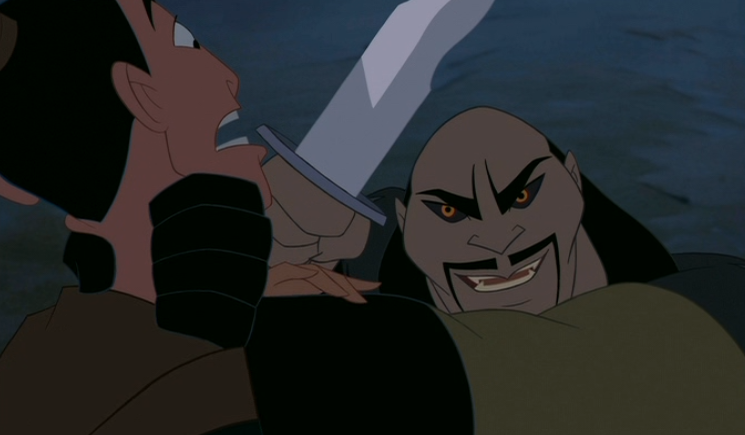

‘Mulan’ villain Shan Yu. Note the little abstractions in his design – such as his black eyes and pointed teeth – that add a bit of stylization and distance to the character.
Why is this not as important for a film such as Maleficent? Because Maleficent has other ways to signal a degree of abstraction and unreality inside of its story. It’s main character is a fairy, and it’s full of fantastical creatures, magic spells, and evil curses. The supernatural element that is so minimized in Mulan is front and center in Sleeping Beauty, which keeps it from getting too overbearing when it makes the jump into live action. Since the story already has a built-in sense of abstraction, since the air is already somewhat rarefied, it’s easier for the filmmakers to take a fantasy conflict (the evil king stole the good fairy’s wings) and plug in more mature elements into the film’s subtext and tone. The final film doesn’t quite come together as well as I would like it to, but on a conceptual level? That inversion of live action and animation makes more sense.
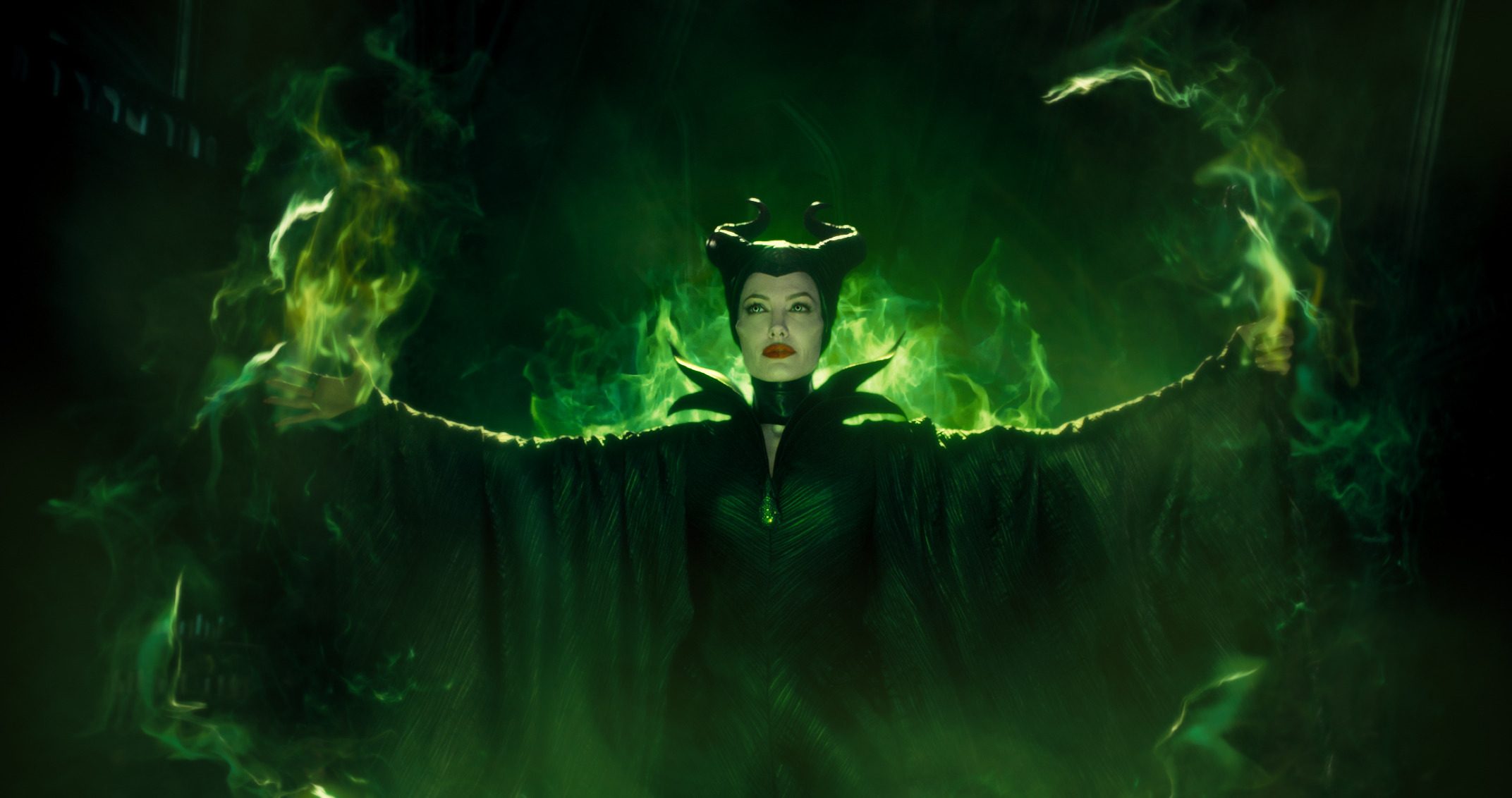

Live action? Sure, but no one is going to be mistaking this for a representation of reality any time soon.
But think about what the conflicts are in Mulan. What are the antagonistic elements at work in that film? Armed combat. Intolerance. War. These are not things that are going to benefit from removing the layers of separation between the film and its young audience. Imagine how Shan Yu is going to work when he is not animated. Sure, the guy’s not often considered one of Disney’s flashier or scarier villains, but even that may be a conscious choice by animators, given how much closer he is to reality than folks like Maleficent, Jafar, or Ursula. Try picturing how the scene in which Shan Yu intimidates the two Chinese scouts and then murders one of them, all in a very crude and non-supernatural fashion, would play out without the protective layer of animation.
(jump forward to about 1:40)
But more saliently than a Hun invasion, Mulan fights another great adversary: misogyny. The entire arc of the film is set up around representing and dramatizing gender discrimination. It starts off by showing how the character doesn’t fit into traditional roles that are expected of her. The story proceeds by having her take on a role that is explicitly off-limits due to her identity as a woman. The filmmakers even build the more suspenseful dramatic track around the question of whether she’ll be discovered or not. These are all things that, while perhaps not demanding a live-action remake, can certainly be tackled outside of animation, right?
Maybe, but maybe not. Here’s where we run into the larger issues – not one of audience protection but rather one of audience identification. Although Mulan is set within a very particular Chinese context, animation has the benefit of abstracting reality into something more broadly identifiable. (On a similar token, this is why Aladdin, our identification character in his movie, is played by the relatively non-descript Scott Weinger, while the Genie is played by the unmistakable Robin Williams.) By its very nature, animation shows less detail than real life. Mulan is inescapably set in China, but its characters and locations never look so specific as to exclude any viewer’s identification experience. Mulan is about all women, even all people who feel outcast in some way, not just Chinese women in the 5th Century. It’s not that a good live action telling of the story will alienate non-Chinese viewers, but animation is a tool that draws people in. Removing that makes the job harder.
I don’t want to make it sound like I’m advocating censorship over what we expose our kids to, or any kind of an ideology that subscribes to the viewpoint that kids need to be shielded from mature topics or themes in the films that are aimed at them. I’ve always been a big proponent of the idea that great children’s entertainment never talks down to kids, but rather finds a way to make a mature, elevated set of concerns accessible to younger audiences. The key there, however, is that these mature topics are made accessible, not just dumped on the kids. Mulan is a great film precisely because it found a way to make war, discrimination, sexism, and a plethora of other corrosive social problems engaging, absorbing, and understandable for kids. Animation was an active ingredient in making that happen, and the choice to tackle this story without it seems very counter-intuitive.
However, none of the challenges that I have described above are insurmountable, and the makers of this new film may be able to find a way to replicate the original’s successes through exciting new avenues. Maybe the characters of Yao, Ling, and Chien-Po will have their comedic dimensions beefed up, providing a comforting ying to the military setting’s intense yang. Or maybe the invading enemy forces will be given some magical or supernatural dimension, (possibly some dragons for Mushu to square off against?) which would add a bit more stylization and unreality to the proceedings. And the filmmakers might be able to find ways to signal contemporary feminist and discrimination issues within the context of the film’s historical setting, indicating to the audience that the events being shown are meant to be taken at more than face value. These, and many other techniques, are all possibilities, but the filmmakers need to recognize how important animation was to the film’s precise balance of content and presentation, and that the imbalances that will result from its excising must be punctually addressed. What shrewd alternative methods are the folks at Disney going to employ to make them all come together?
We’ll have to wait and see…

